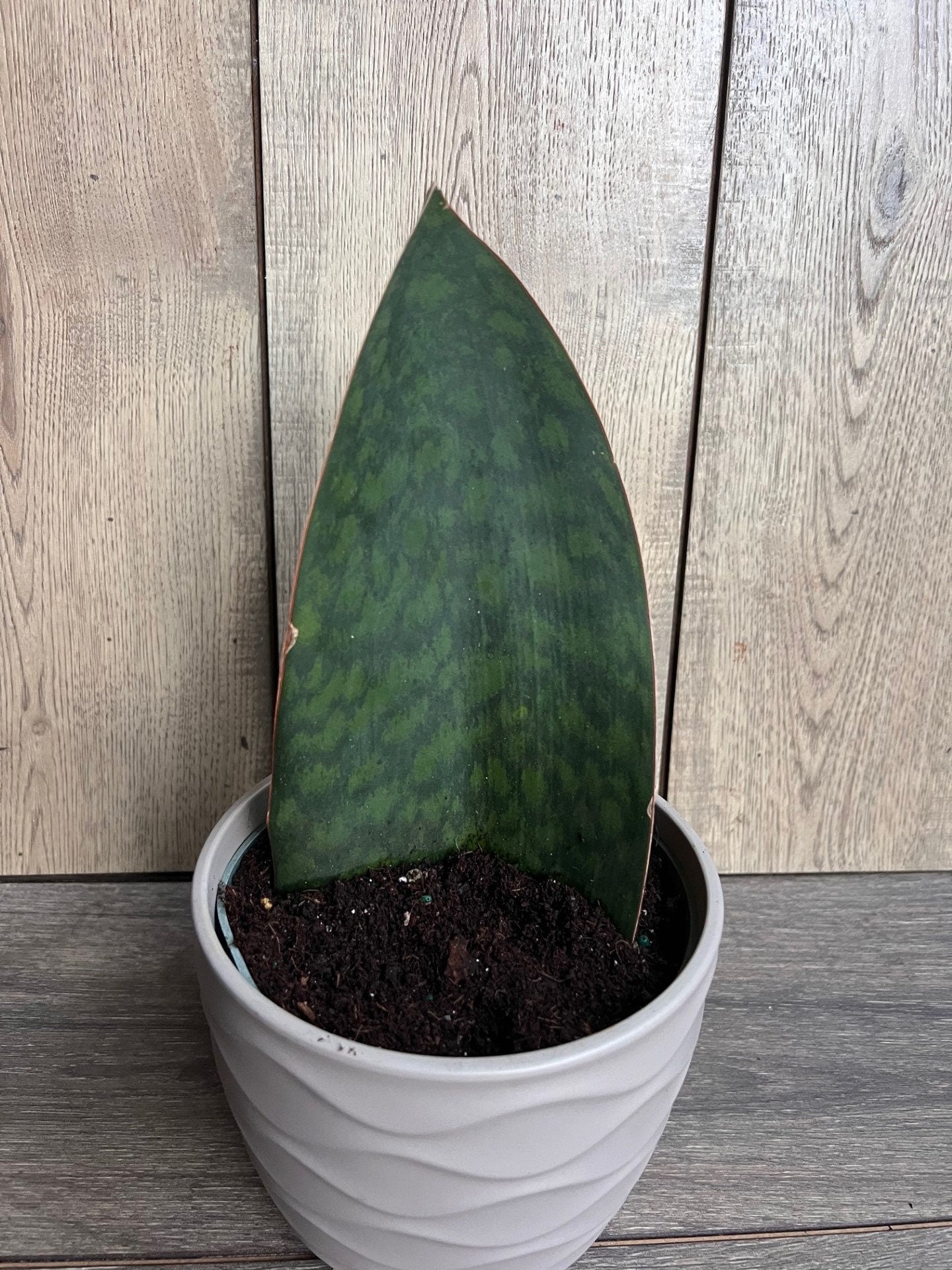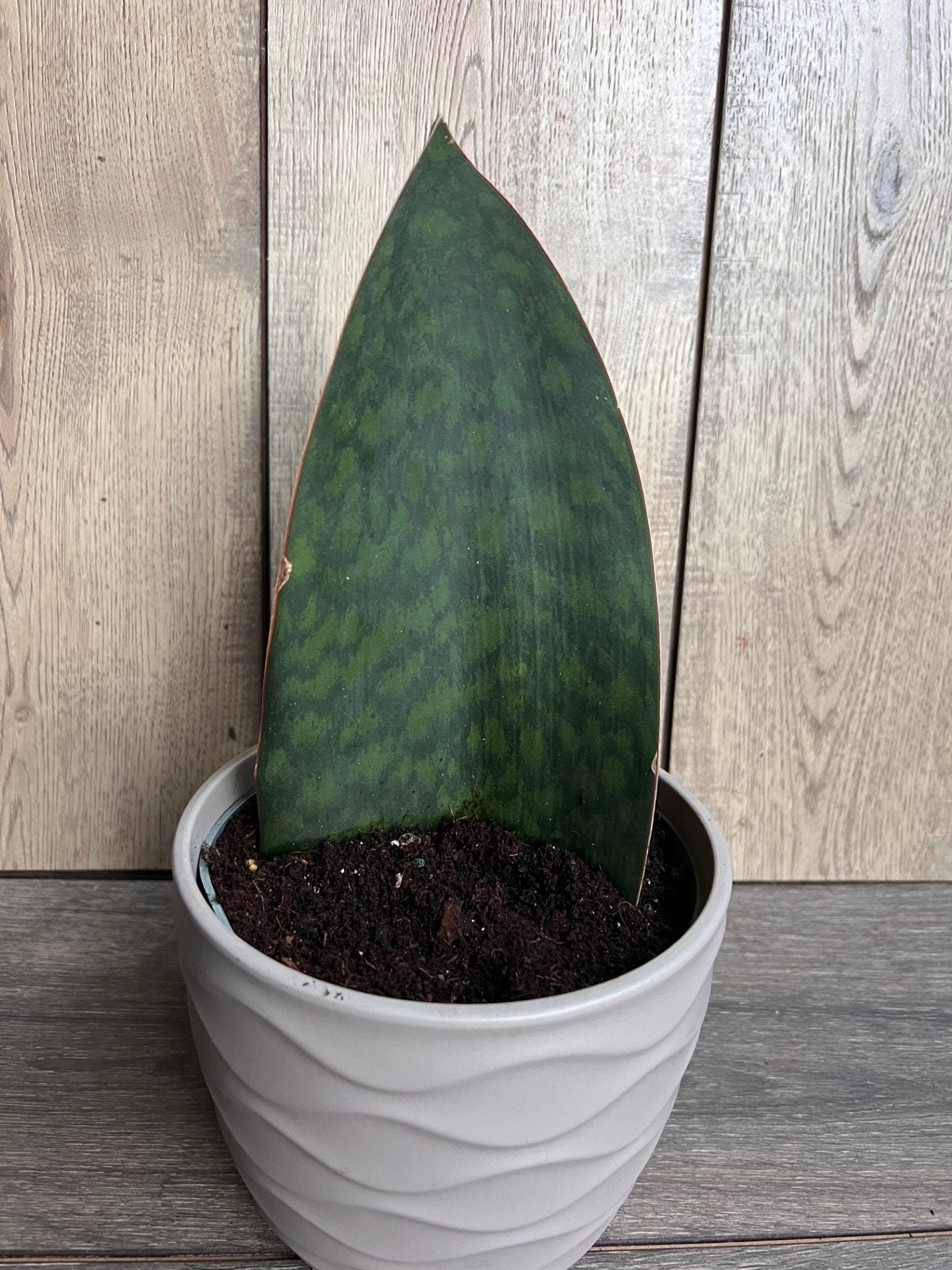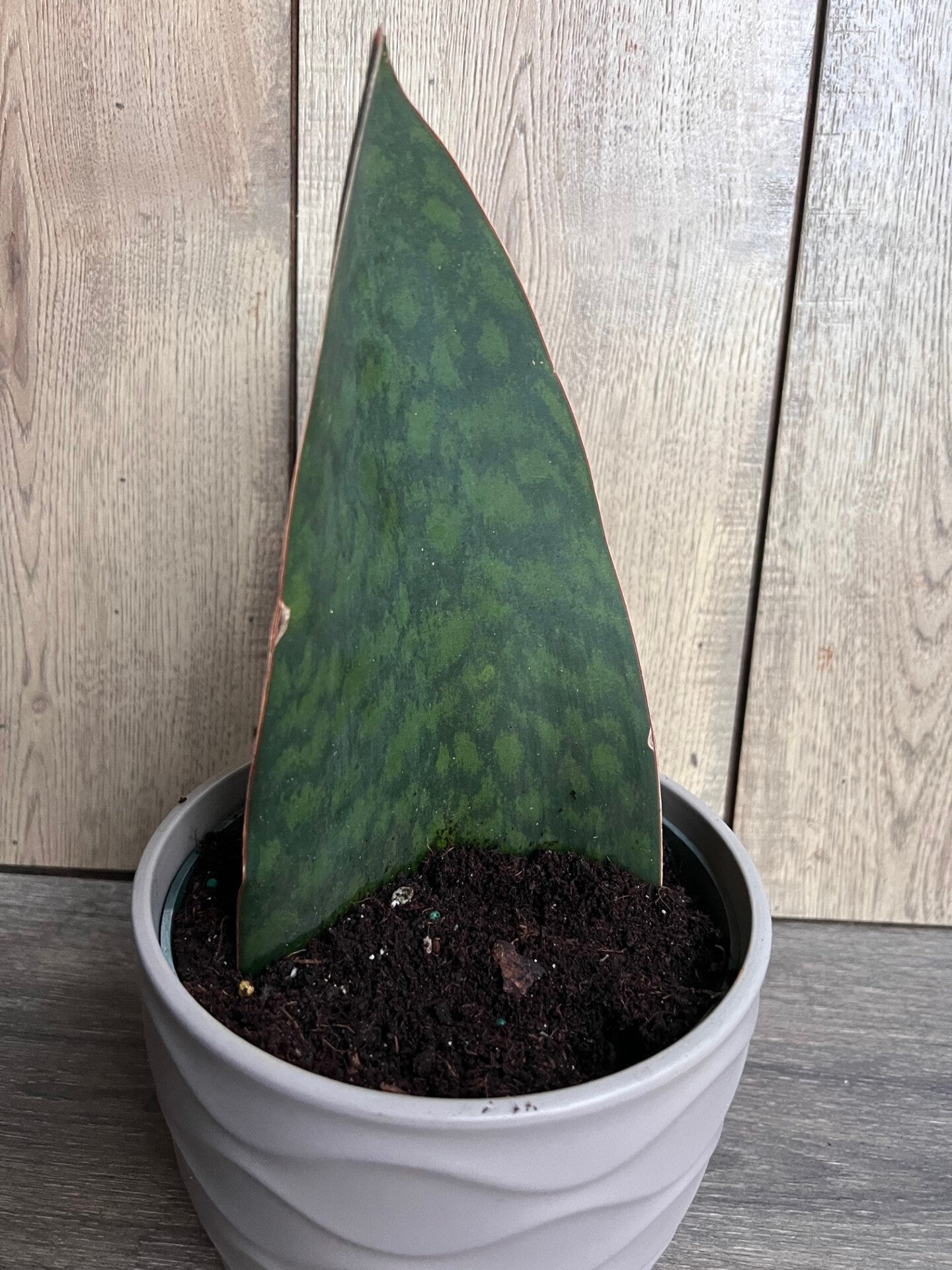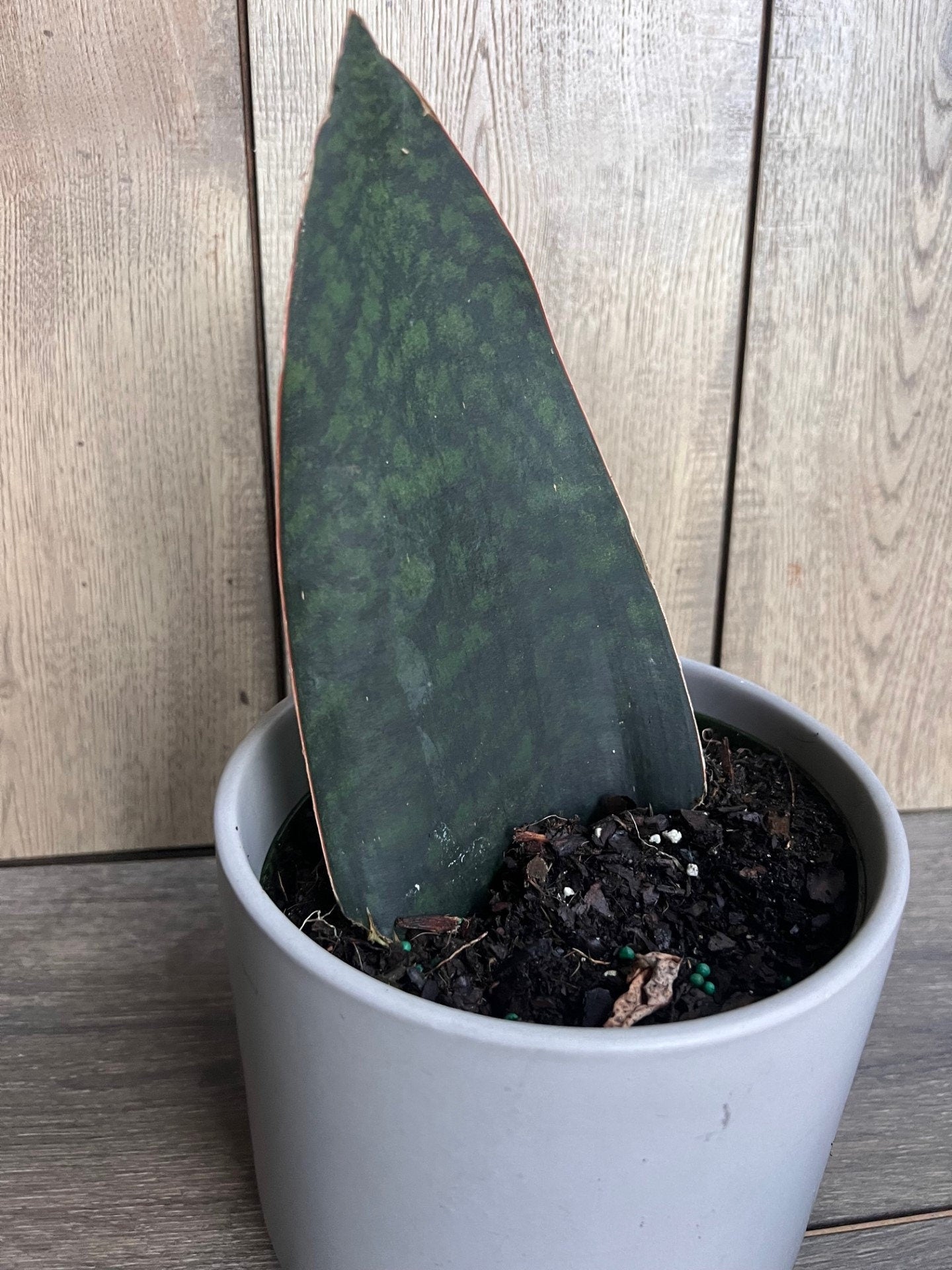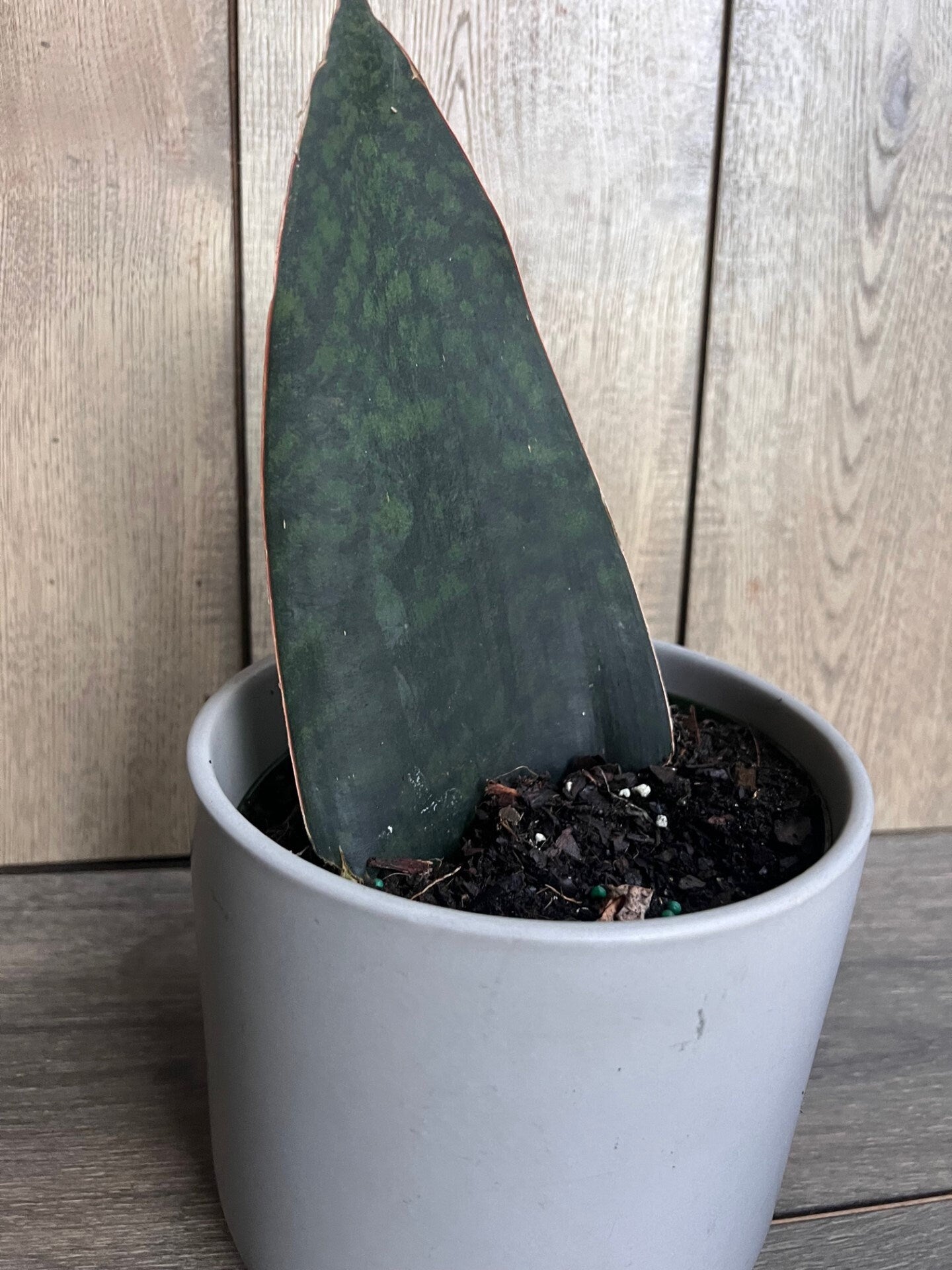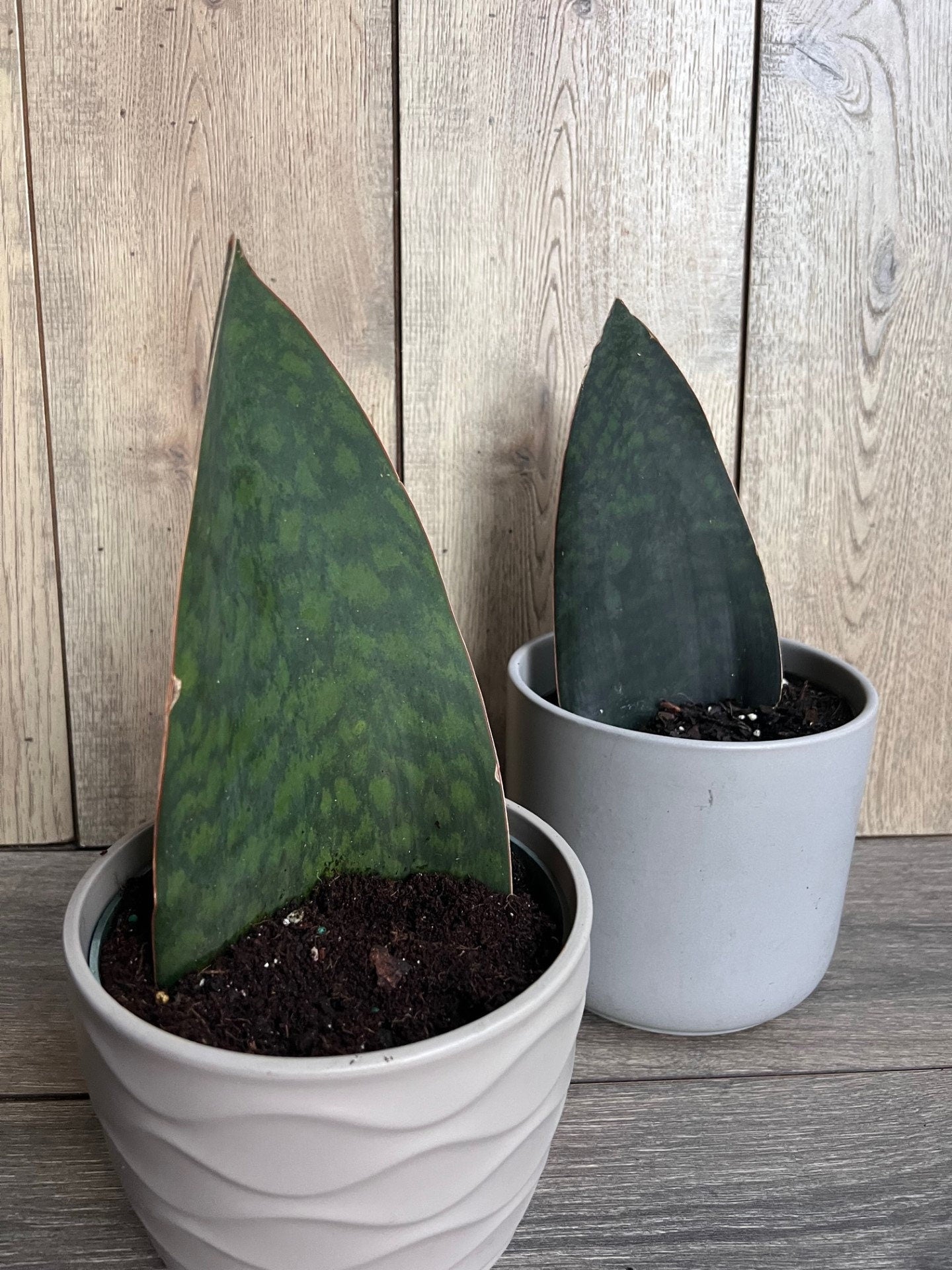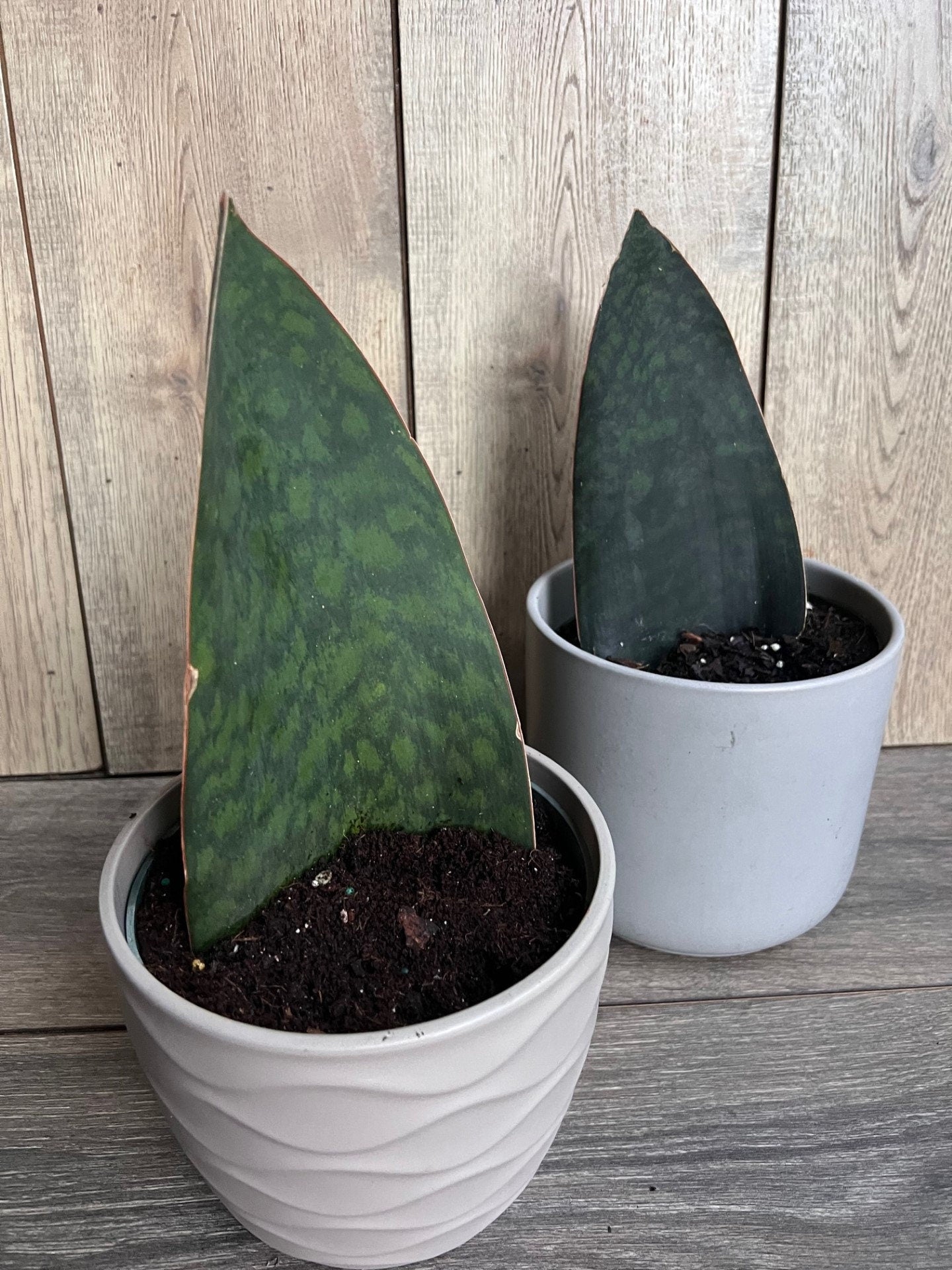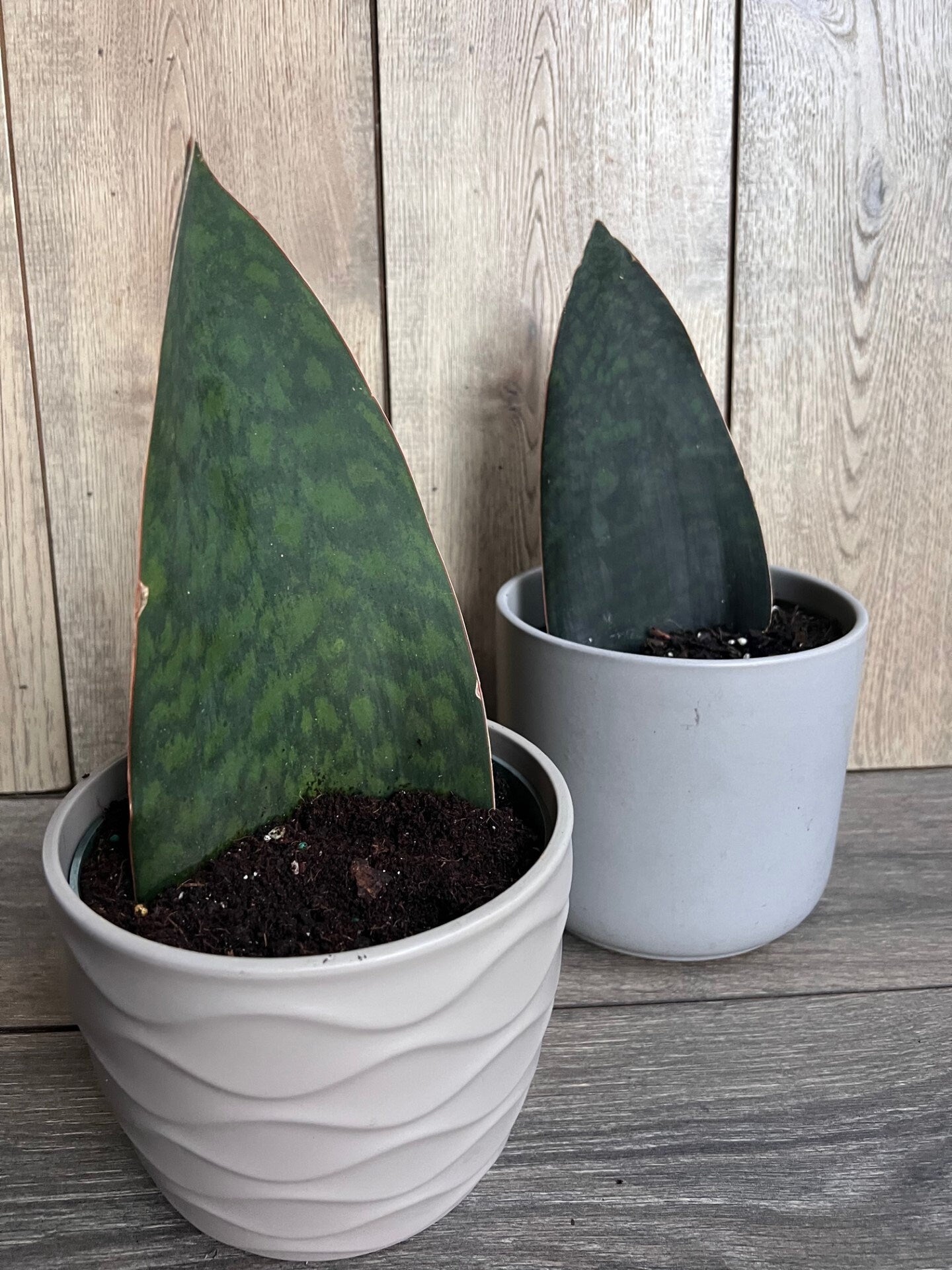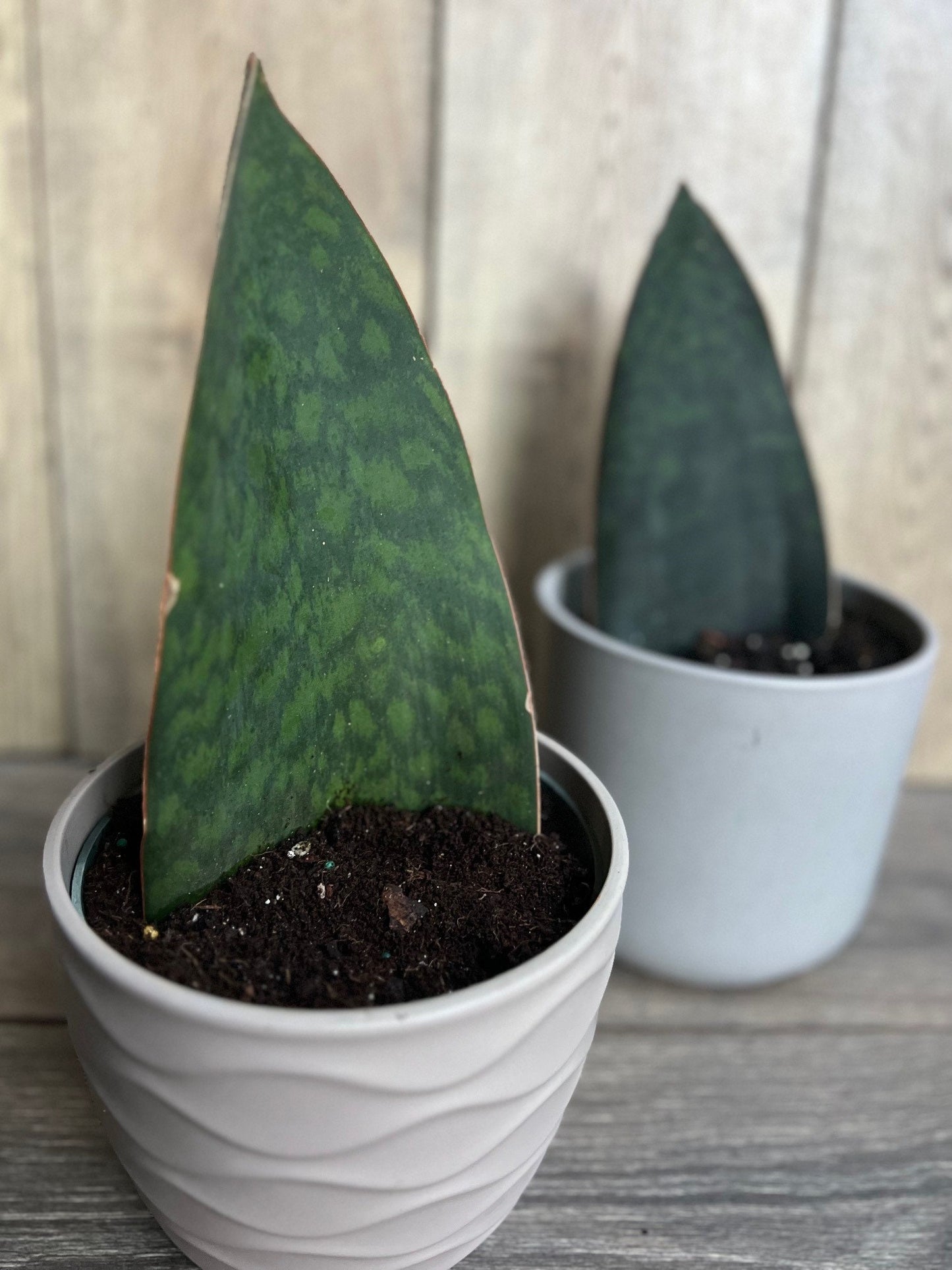Sansevieria Masoniana, Sansevieria Whale Fin, Snake Plant in 6" Pot
Sansevieria Masoniana, Sansevieria Whale Fin, Snake Plant in 6" Pot
Couldn't load pickup availability
Note: you will receive one Sansevieria Whale fin in 6" pot similar to the pictures
Sansevieria masoniana, commonly known as the Whale Fin Snake Plant, is a striking variety of Sansevieria that is distinguished by its large, broad, paddle-shaped leaves, which can grow up to 3 feet tall. The leaves are typically dark green with light green or yellowish patterns, creating a unique, marbled appearance. This variety gets its name from the shape of its leaves, which resemble a whale’s tail or fin. Sansevieria masoniana is known for its resilience, making it an excellent choice for indoor spaces. It is highly tolerant of low light, drought, and neglect, requiring minimal care. Like other Sansevieria species, it is also an air-purifying plant, making it a popular choice for both homes and offices. Its dramatic size and unusual form make it a striking focal point in any room.
1. Light
- Bright, indirect light: Sansevieria masoniana prefers bright, indirect light but can tolerate lower light conditions, although its growth will slow down. Direct sunlight should be avoided, as it can scorch the large, thick leaves.
2. Watering
- Infrequent watering: Like all snake plants, Sansevieria masoniana is drought-tolerant and should be watered only when the soil is completely dry. Watering every 2-3 weeks is usually sufficient. Overwatering is the most common issue, so be sure to let the soil dry out fully between waterings and avoid letting the plant sit in water.
3. Soil
- Well-draining soil: This plant requires well-draining soil to prevent root rot. A cactus or succulent mix is ideal, or you can add perlite or sand to regular potting soil to improve drainage. Ensure the pot has drainage holes to allow excess water to escape.
4. Temperature
- Warm temperatures: Sansevieria masoniana thrives in temperatures between 60°F and 85°F (16°C to 29°C). It is sensitive to cold and should not be exposed to temperatures below 50°F (10°C), as frost can damage its leaves.
5. Humidity
- Average humidity: This plant is not picky about humidity and does well in typical indoor conditions. It can tolerate dry air, so there’s no need for misting or additional humidity.
6. Fertilizing
- Feed sparingly: During the growing season (spring and summer), you can feed Sansevieria masoniana once a month with a diluted, balanced liquid fertilizer. Avoid fertilizing in the fall and winter when the plant’s growth slows down.
7. Pruning
- Minimal pruning: Sansevieria masoniana requires little to no pruning. Simply remove any dead or damaged leaves as needed. The plant naturally maintains a tidy shape, so pruning is only necessary for aesthetic reasons or to remove unhealthy growth.
8. Repotting
- Repotting every 2-3 years: This variety has a slow growth rate and doesn’t need frequent repotting. Repot it when it becomes root-bound or after a couple of years. Choose a slightly larger pot with drainage holes to ensure healthy root development.
9. Pests and Diseases
- Pest-resistant: Sansevieria masoniana is relatively pest-resistant but may occasionally attract mealybugs, spider mites, or scale. Inspect the plant regularly for signs of pests and treat them with insecticidal soap or rubbing alcohol if necessary. Overwatering can lead to root rot, so avoid waterlogged conditions.
10. Propagation
- Propagation by division: Sansevieria masoniana can be propagated by dividing the plant during repotting. Carefully separate the rhizomes (root clusters) to create new plants. Leaf cuttings can also be used, though they may take longer to root.
Summary of Care Tips:
- Light: Bright, indirect light; tolerates lower light but grows slowly.
- Watering: Water infrequently, allowing soil to dry out completely.
- Soil: Well-draining soil, such as cactus or succulent mix.
- Temperature: Prefers temperatures between 60°F and 85°F (16°C to 29°C); avoid cold.
- Humidity: Tolerates average humidity; no special needs.
- Fertilizer: Fertilize sparingly during the growing season.
- Repotting: Repot every 2-3 years or when root-bound.
With its large, dramatic leaves and minimal care needs, Sansevieria masoniana makes a bold and attractive addition to any indoor space, requiring only basic attention to thrive.
Share
